When you think about puppy training, what comes to mind might be how to teach them;
- Where to go to the bathroom;
- Or how to teach them to sit and stay on command;
- Or maybe how not to jump on people.
But at the top of everyone’s list should be how to socialize a puppy.
This is because a well socialized pup is so much easier to train.
When a puppy is not properly socialized they tend to be fearful. That fear causes them to be less focused on you and more focused on what they are afraid of. This makes training very difficult.
However, if you have ever looked at some of the puppy socialization checklists, the process can feel a bit overwhelming. I know I was.
But it doesn’t have to be.
Join us as we show you easy steps to follow to socialize your puppy.
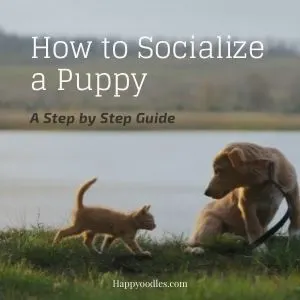
What is Puppy Socialization?
Puppy socialization is the process of introducing your puppy to everyday events in a calm and secure environment. The reason you want to do this, is to teach your puppy not to be afraid.
An example of this would be a vacuum. You and me know it is not something to be afraid of. But that loud sound can be very frightening to a puppy that doesn’t know what it is.
This is where you come in. It’s your job to turn the scary things in life into non scary things.

When Can You Start to Socialize a Puppy?
The puppy socialization process starts with their first ride in your car as you bring them home. That very first experience with your new puppy is teaching them what you are like and what it is like to go for a car ride with you.
If they have a pleasant experience and continue to have pleasant experiences in the car, they will learn to love the car.
However if it’s a traumatic experience your puppy might hate car rides for the rest of their life. But no pressure.
The reality is puppy socialization starts before your puppy comes to live with you.
They begin to learn about the world through interactions with their previous family, the puppy’s mom and their litter mates. Hopefully what they have learned before living with you was positive.
But even if it wasn’t, at 7 or 8 weeks old they are still young enough to overcome any bad experiences they may have had. You just need to give them lots of good ones.
Limited Time to Socialize a Puppy
The time you have to socialize your puppy is not unlimited. Puppies are most open to new things prior to 3 months old.
Sometime between 3 and 4 months old your puppy will naturally start to become weary of the unknown.
But that doesn’t mean you should stop socializing them after 4 months old. A dog that has been taught to be confident will continue to be open to new things for life.
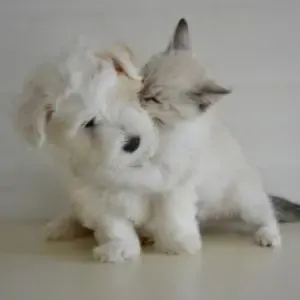
Health Concerns
Although it’s important to socialize a puppy early, it’s equally important not to expose them to deadly diseases before they are fully vaccinated.
You can safely socialize your puppy in your home assuming there are no other non-vaccinated dogs.
Start the process by introducing them to all the sights and sounds that make your home a home. But do it slowly. Too much too soon can be overwhelming to a small pup that was just taken from the only home they knew.
First on the list should be the members of their new family and any other animals in the house.
Next show them where they will sleep and eat. Keep your puppy close to the family as much as possible so they can see and hear everything that is happening.
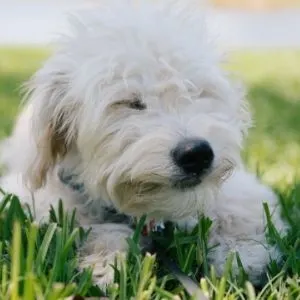
Taking it outside
Socializing your puppy outside of your home has its risks. But the American Veterinary Society of Animal Behavior (AVSAB) recommends that you start to socialize a puppy in safe places outside of your home once a puppy has received their first set of vaccinations and deworming at around 7 to 8 weeks old.
But make sure it is a safe place. Pet stores and dog parks are not safe places for young puppies. For safe places to socialize your puppy check out our post, 5 Safe and Easy Ways to Socialize a Puppy
Before we get into how to socialize a puppy, I just want to touch on the Puppy Blues. Dealing with a new puppy can be hard, especially if you are a first time puppy parent.
It’s common to feel like you made a mistake. It’s important to understand that you are not alone. I also went through the puppy blues. You can see how I handled the puppy blues in my post on Puppy Blues: Dealing with the Regret.

How to Socialize a Puppy
As I mentioned above the process of socializing your puppy can be overwhelming if you try to do everything on the checklist before your puppy reaches 4 months old. Plus some of the items on the list may not even be necessary.
An example of this is taking your puppy to a pet store. It is not necessary that your puppy go to a pet store. Any type of outing that involves people and other animals should suffice.
In fact a pet store is not a safe place to take a puppy that has not been fully vaccinated, yet it was found on multiple checklists.
I strongly suggest that you use a checklist as a guide to help you think of all the things they should be exposed to. But you should prioritize what is most important to you and start there.
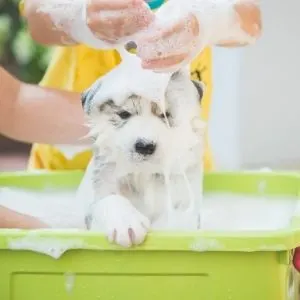
How to Introduce a Puppy to Something New
The most important thing to remember is to make sure the experience is a good one. One bad experience will last a lifetime.
Also you do not need to make a big deal out of every new experience your puppy has. Your Puppy will learn that the sound of clanging pots and pans are just the normal sounds of making dinner without a special introduction.
Same thing goes for noisy kids or any other sounds they will encounter in everyday life. As long as the puppy is not hurt they will learn that these noises are just the way things are when living with a family.
For new things that frighten your puppy, give them a treat to distract them the next time they are exposed to it. That way they will begin to association the event with something good. This trick should work for new experiences but may not work if the puppy has already developed a fear of the event.
Exercise 1: Introducing Something New
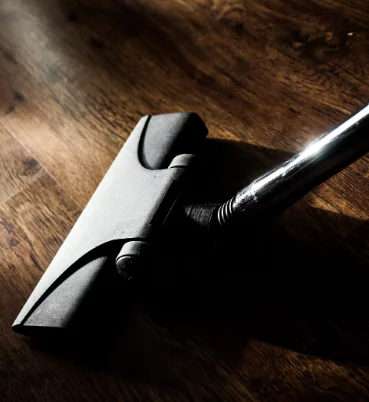
As I mentioned above most puppies are afraid of the vacuum due to the loud noise they make. So it is your job to show your pup that the vacuum will not hurt them. Here are simple steps to teach your puppy not to be afraid of the vacuum.
- Start the process by leaving the vacuum on the floor where they can see and smell it.
- Don’t force them to go near the vacuum. When they are ready, they will explore it on their own.
- After they are done smelling it, turn it on. Make sure they are a safe distance from it. Since they will not expect the loud noise, turning it on right next to them will frighten them.
- Vacuum the room like normal while the puppy is close by. Try not to get too close to them. You don’t want them to think the vacuum is chasing them. They will most likely be afraid but curious at the same time.
- While you are vacuuming throw some treats around the room you are vacuuming in. Keep the vacuum away from the treats.
- Do not engage in your puppy while you are vacuuming.
- Repeat this process each time you need to vacuum.
Over time your puppy will become use to the vacuum. They may even start to like it if they get treats every time it comes out.
The Goal is to Build Confidence
It’s impossible to introduce your puppy to everything they may encounter in life in their first few months. Therefore your goal is to teach your pup to be comfortable with new experiences.
A puppy that is taught not to be afraid will grow up to be a confident dog. This also means teaching them how to react when they encounter something new.
Remember you are their greatest teacher. As a puppy they will learn to count on you to keep them safe. They will also learn how to react to things based on how you react. If you remain calm your puppy will also feel calm.
You may not realize this but your dog can pick up on subtle clues when you are feeling stress. Although well known by dog lovers this knowledge was re-affirmed by a recent study in Sweden.
They compared the stress levels in dogs to their owners by measuring the levels of cortisol, a stress hormone, in their hair. They found that there was a strong correlation between the dog’s long-term cortisol levels and their owners.
Socialization Process
The socialization process can be broken down into four main parts: Handling; Sounds; Interactions; and Experiences. We will take a look at each one and give easy ways to accomplish them.
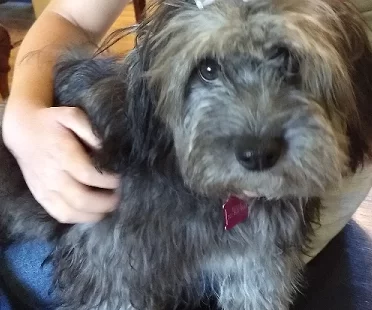
Handling
Handling refers to touching your pup in places they may not like. Places like their paws, ears, tail and mouth. It also means to be able to restrain them calmly when needed.
Typically puppies don’t like to be handled. They want their freedom.
However learning to be handled is a very important life skill for dogs. A puppy that is not taught to be comfortable with being handled will make a difficult patient in the veterinarian’s office.
It also will be difficult and dangerous to cut their nails or to groom them. Puppies that are not taught to be handled may become aggressive as an adult when someone tries to touch them.
Exercise 2: Handling
It’s easy to teach your puppy to become comfortable with handling. Try to do this exercise every day for the first month. Then do it a few times a month until they are an adult. It works best after some playtime or exercise, right before they are ready for a nap.
- Start by sitting on the floor next to your puppy.
- Pick them up and gently lay them on their back in your lap. Be careful of their back when you flip them. You want to make sure your puppy feels comfortable and secure. They will probably try to flip over but don’t let them. Talk calmly to your puppy and pet them to help relax them.
- Once they have relaxed in your lap, start to touch them in different places. I provided a list below of places to touch them but don’t do everything every time you do this exercise. Pick a couple of spots to focus on each time.
- Remember this is supposed to be a positive experience. Stop if your puppy is really struggling and try again later.
- If your puppy really doesn’t like this exercise try giving them a treat to distract them.
- If possible have other people you know and trust to perform the exercise as well. That way they will learn to be handled by a variety of people.
Handing Socialization List
- Gently touch paws
- Gently squeeze paws
- Hold paws
- Touch nails
- Push back hair around nails
- Touch bottom of feet in between their pads
- Touch their face
- Open eyelids
- Touch their legs, belly and backs
- Cradle puppy in your arms
- Brush their teeth
- Examine mouth and gums
- Place your fingers in mouth
- Touch nose
- Check ears
- Gently touch tail
- Gently grab the skin
- Hold puppy tightly
- Hug puppy
- Wipe puppy with towel
- Grab their collar
- Practice putting on collar or harness
- Gently brush puppy with soft brush
Sounds
Many dogs are afraid of loud sounds like the vacuum, fireworks or thunderstorms. For sounds you can control like the vacuum follow the steps above on ‘How to Introduce your Puppy to Something New’.
But for sounds that you cannot control, like thunder, you either need to wait for a storm to happen or you can use a YouTube video that play the sounds. I personally did not find the videos effective because it lacked the vibrations you feel in real storms.
However if you have top of the line speakers you may be able to get the same effect as a real storm.
Sirens are another scary sound that might be hard to introduce them to. However, some volunteer firehouses have an open house for the community. You could attend one with your pup and ask if they will play the sirens.
Exercise 3: Thunderstorms
- To introduce your puppy to the sounds of thunder keep a watch on the weather forecast to see when the next storm might be.
- Then try to make arrangements so you are with your puppy at the time of the storm.
- Gather a few toys and treats your puppy really likes before the storm hits.
- When the storm starts to become loud, watch your puppy to see if they notice the sound.
- Remember at this age they will react the same way you do. If you ignore the storm chances are so will they.
- You want to distract your puppy from the sound as much as possible.
- Play a game of tug or fetch
- Work on some simple commands like sit and stay. Remember to reward them with their favorite treat to keep their focus.
- Play the Go Find game. In the Go Find game you scatter small pieces of their favorite treat around the room for them to go find.
- Do Not make a big deal of them being scared or of the sound. You need to act as you always do.
Sounds Socialization List
- Fireworks
- Doorbell
- Smoke alarm
- Car honking
- Fire engine
- Motorcycle
- Yard tools (mower, leaf blower, etc.)
- Baby crying
- Thunderstorms
- Grooming clippers
- Kitchen appliances
- Pots and pans
- Vacuum Cleaner
- Truck backing up
- Traffic noise
Our Story
Since Bella was born in December she was over 6 months old the first time she heard fireworks. Even though the sound was new she was confident enough that she did not over react when she heard them.
Interactions
Interactions means meeting new people, dogs, or other animals. Make sure you introduce your pup to a wide range of people and animals. This includes a groomer if you have a dog that will need to be groomed.
An easy way to introduce your puppy to other dogs is to take them to a Puppy Socials. Puppy socials allow you to introduce your pup to other puppies in a safe environment.
Look for a puppy social that is run by an experienced dog trainer. They should require proof of up-to-date vaccinations and de-worming. Not only will your pup get to meet and play with other puppies, you get the benefit of a trainer who can help you understand what normal play is versus aggressive play. To learn more about Puppy Socials read Puppy Social – What to Expect.
Exercise 4: Interactions with People
An easy and safe way to introduce your puppy to new people is to do it in your home.
- Invite people you know to come over and meet your new puppy. We invited the neighborhood kids to come over.
- Keep the invite to only one or two people at a time
- Allow the puppy to sniff the newcomers
- Most puppies love to meet new people but if your puppy appears scared asked your guess to ignore them
- Make sure your puppy has a safe place they can retreat to if they want
- As you interact with your guess your puppy will follow your lead and start to relax around them.
- When your puppy is ready to meet them they will move closer to your guest.
- Remember the experience needs to be positive so don’t invite people who do not like dogs.
- Ask people to wear different clothing (Hats, glasses dark coat, etc.)
Interactions Socialization List
Try to introduce your puppy to a wide range to people and animals. But don’t worry if you miss one or two. If your puppy has had a good experience with most people they will assume all people are good. Most issues with dogs not liking certain types of people come from a bad experience they had with that type of person.
- Women
- Men
- People of all ethnicities
- Children
- Elderly
- People with a cane or walker
- Toddlers
- Men in uniform
- Other well behaved dogs
- Large dogs
- Small dogs
- Cats
- Any other animals they might reasonably encounter
Experiences
Experiences can be anything your dog may encounter in their life. Things like going swimming or having a bicyclist past by. Think about how you plan to include your dog in your activities, than slowly introduce them to it. Start out with a less stressful experience like wearing a collar and walking on a leash. When they have mastered that you can move on to a more stressful situation like walking on the sidewalk on a busy street.
An easy way to provide a variety of experiences in a safe environment is to go to Puppy Kindergarten. In Puppy Kindergarten, your pup will learn basic commands like sit, stay and come.
In addition they will meet new people and their pups. They will also be exposed to things like being handled by a trainer or playing on different surfaces. Look for a puppy kindergarten that requires proof of vaccines and de-worming. If they don’t require proof, look for another place.
Exercise 5: Practice Being Alone
Puppies are social creatures that want to be with us all the time. If it was up to them they would stay by our side always. But for most of us that is not possible. Since being alone is not something most puppies want, they need to be taught that being alone is ok. Our next exercise shows you how.
- It’s important that your start off slow with this process. It will take weeks before your puppy will accept that he needs to be left alone sometimes.
- Start when your puppy is young by placing them in their crate with a special treat or SAFE toy.
- Make the crate comfortable with something to lie on and a shirt or blanket that smells like you.
- Leave the room for a couple of minutes. At least until your puppy realizes you have left.
- Come back in the room
- Do not make a big deal of leaving or coming back
- If your puppy is crying do not let them out of the crate. Wait in the room until they have stopped crying and then let them out.
- Continue this exercise daily increasing the time.
- This exercise will teach your pup that you will always come back.
Once you have increased the time to a half hour try leaving your home for short periods of time. Remember to always give them a treat.
Experiences Socialization List
It’s impossible to come up with a comprehensive list of experiences. The most important thing to think about is what your life is like now and what you plan to be dong in the next 15 years. Then try to include your puppy in as many of those experiences as you can early on.
- Car rides
- Umbrellas
- City traffic
- Walking on a busy sidewalk
- Water/Swimming
- Parking lots
- Going inside building
- Automated doors
- Bicycles
- Roller Blades/Skates
- Strollers
- Someone running
- Beach
Here are 5 Safe and Easy Ways to Socialize your Puppy before they are four months old.
Where NOT to Socialize a Puppy
There are certain places you should never take your puppy before they are fully vaccinated. This includes any places where an un-vaccinated dog might go. Places like pet stores or dog parks at not safe. If you must bring your puppy into a pet store carry them around.
Don’t Overdo It
Remember not to overdo it. When you socialize your puppy take it slow. Give your puppy time to rest in between new experiences. It is also important to make sure they have a safe place they can retreat to when they start to become over whelmed. Too much too soon can cause your puppy to become over stimulated and stressed.
The purpose of puppy socialization is to help your pup feel confident with the world around them. A confident, at ease dog will be easy to control and a pleasure to be with.
Common Socialization Mistakes
Sometimes, even though we have the best of intentions, we still make mistakes during the socialization process. Here are 10 common puppy socialization mistakes you don’t want to make.
For More on How to Socialize a Puppy
Puppy Socialization Basics – What You Need to Know to Get Started
